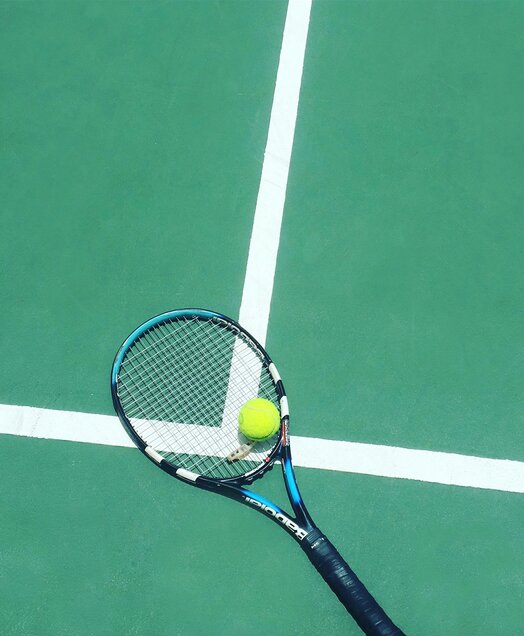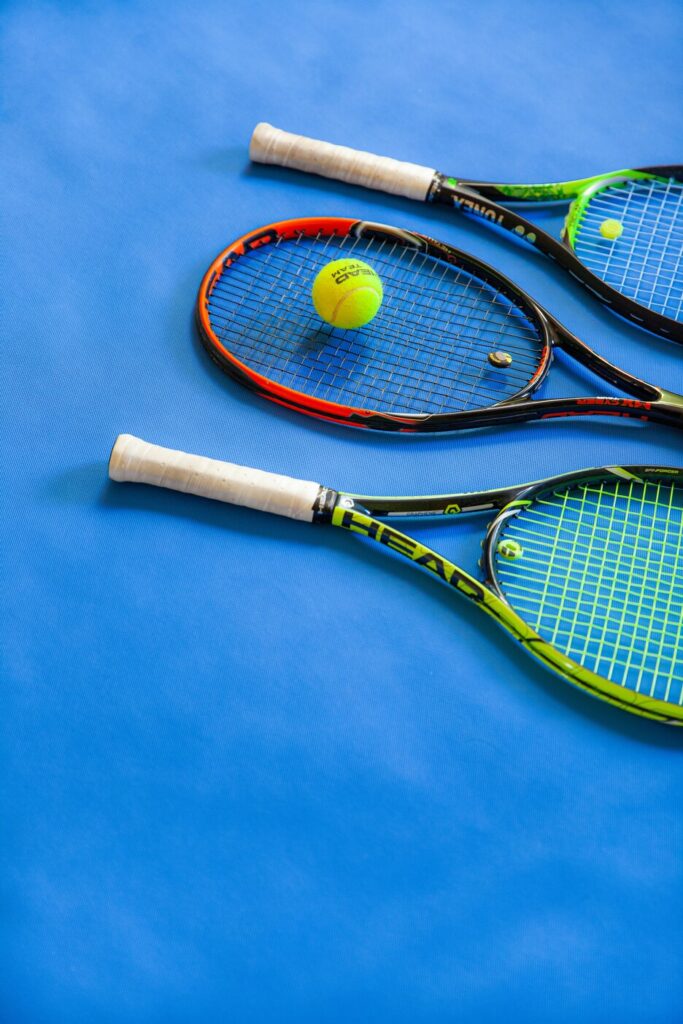Understanding Tennis Racket Sizes: A Comprehensive Guide with Tennis Racket Size Chart
Introduction:
Choosing the right tennis racket size is crucial for any player looking to excel on the court. The size of your racket can significantly impact your game, affecting power, control, and overall performance. With a plethora of options available, it can be overwhelming to navigate through the various sizes and specifications. However, fear not, as this guide aims to demystify selecting the perfect tennis racket size, accompanied by a detailed tennis racket size chart.
Understanding Tennis Racket Size Chart:
Before delving into the specifics of tennis racket size chart, it’s essential to understand the various components contributing to a racket’s overall size. The primary factors to consider include head size, length, weight, balance, and grip size. Each element plays a vital role in determining how a racket performs on the court and can greatly impact a player’s game style and preferences.

What is the required tennis racket size?
Even though we’ve already discussed the ITF maximum dimensions for a tennis racket, there are still a number of things to take into account when figuring out what size racket would work best for you. It’s crucial to take into account the racket’s head size as well as the grip or handle’s length.
We’ll look at the various head sizes that are available and how performance is affected below. We’ll also go over how to measure yourself to determine the ideal grip length and width, as well as tennis racket grip sizes.
Head Size:
The head size of a tennis racket refers to the area of the racket head that comes into contact with the ball. Typically measured in square inches, head sizes can vary from as small as 85 square inches to as large as 135 square inches. A larger head size offers a larger sweet spot, providing more forgiveness on off-center shots and generating additional power. Conversely, smaller head sizes offer more control and precision but require precise shot placement.
Length:
Tennis rackets come in various lengths, the standard length being around 27 inches. However, extended length rackets, typically 27.5 to 29 inches, are also available. Longer rackets offer increased leverage and reach, enabling players to generate more power and spin on their shots. However, they may feel less maneuverable, especially for players with shorter swings.
Weight:
The weight of a tennis racket is another critical factor to consider when selecting the right size. Rackets range from ultra-lightweight (less than 9 ounces) to heavyweight (12 ounces or more). Lighter rackets are easier to maneuver and are suitable for beginners or players with slower swing speeds. Conversely, heavier rackets offer more stability and power, making them ideal for advanced players with faster swings.
Balance:
Racket balance refers to the distribution of weight throughout the racket. Rackets are typically categorized as head-light, head-heavy, or evenly balanced. Head-light rackets have more weight towards the handle, providing better maneuverability and control. Head-heavy rackets, on the other hand, have more weight towards the head, offering increased power and stability. Balanced rackets aim to strike a middle ground between maneuverability and power.
Grip Size:
Grip size is often overlooked but is crucial for comfort and control during gameplay. Rackets come with various grip sizes, ranging from 4 inches to 4 5/8 inches in circumference. Choosing the right grip size ensures that the racket feels comfortable in your hand and allows for proper wrist action. An incorrectly sized grip can lead to discomfort, fatigue, and even injury over time.
Which size head for a tennis racket is required?
It is more important to consider your playing style when choosing the right tennis racket head size than your age or stature. A player will often be able to produce greater power the bigger their tennis head. Smaller players or beginners frequently use a racket with a relatively large head in order to create power without needing to exert all of their force into every shot and hit the ball more easily.
In general, smaller racket heads offer greater control. Because they can position shots more accurately, intermediate and experienced players will typically choose a racket with a somewhat tiny head.
The size of the tennis racket’s “sweet spot” is also determined by the size of the racket head. The sweet spot is the part of the racket that is closest to the centre and offers the best control and power while causing the least amount of handle vibration when the ball is struck.
Again, this is a huge benefit for novices who might not be able to make contact with the ball as accurately as more experienced players. A racket with a larger head size will typically have a larger sweet spot.
Larger head sizes in tennis rackets have the drawback of being more difficult to wield. Many players will find it more difficult to switch grips and generally react quickly while using a racket with a large head as opposed to one with a smaller head.
It’s likely that the ball won’t be coming at you very quickly if you’re a novice, competing against another beginner, or practicing with a coach. In light of this, a relatively large head on a racket shouldn’t be a disadvantage.

Tennis Racket Size Chart:
To assist players in selecting the appropriate tennis racket size, below is a comprehensive tennis racket size chart:
| Racket Size | Head Size (sq. inches) | Length (inches) | Weight (ounces) | Grip Size (inches) | Balance |
| Small | 85-94 | 27-27.5 | <9 | 4 | Head-Light |
| Medium | 95-105 | 27-27.5 | 9-10 | 4 1/8 – 4 3/8 | Even |
| Large | 106-135 | 27-29 | >10 | 4 1/2 – 4 5/8 | Head-Heavy |
TENNIS RACKET Size Chart Based On AGE
To optimize their enjoyment and prevent frustration from an improperly sized or little tennis racket, it is crucial that kids utilize the appropriate size racket.
The length of various junior and senior tennis rackets varies, although racket head sizes don’t. Getting the right length tennis racket is usually the key to selecting the appropriate size.
Although children grow at varying rates, the table below provides an approximate guideline for the appropriate length of tennis racket for each age group:
Tennis Racket Size Chart Based On Age
| Tennis Racket Size by Age | |
| Age | Racket Length |
| 4 and below | 19 inches |
| 4-5 | 19-21 inches |
| 6-8 | 21-23 inches |
| 9-10 | 23-25 inches |
| 12+ | 25-27 inches |
When teaching a child under the age of four how to play tennis, a plastic racquet and a foam ball are frequently used. Children may hit foam balls more easily than conventional tennis balls because they are softer, slower, and larger. Additionally, they are less likely to experience the problem that regular tennis balls can have of the balls repeatedly bouncing above head height.
After that, kids move on to mini tennis. Mini-tennis is a simplified form of tennis that is intended to introduce kids (4–10) to the game. It uses smaller courts, slower-bouncing balls, nets, and rackets. Children can play mini-tennis without experiencing the frustration of trying to use full-size equipment for the first time, as they rarely have the physical strength to do so. The redesigned tennis balls also significantly improve participant enjoyment, as regular tennis balls frequently bounce above young children’s head height.
WEIGHT OF TENNIS RACKET
The weight of the tennis racket should also be taken into account. Although there are no set guidelines for the ideal weight of a racket, a player’s playing style and level of strength and endurance will typically determine the weight they choose.
Tennis racket size chart are categorized by weight in the table below:
| Tennis Racket Weights | ||
| Weight | Category | Benefits |
| < 290g | Light | Mastery and flexibility |
| 290-310g | Average | Power & Flexibility |
| > 310g | Heavy | Power |
Skilled tennis players typically select a racquet weight according to their preferred style of play. In general, a heavier tennis racket will generate greater force than a lighter one. But it’s harder to control and maneuver a larger racket, say, while switching grips or positioning strokes. Junior players may find it more difficult to handle a heavier tennis racket, and lengthier matches will make it more difficult to utilize when stamina becomes crucial.
Lighter rackets are usually simpler to swing for groundstrokes and quicker to position for volleys. Additionally, they’re simpler to work with when you want to alter your grip or approach a shot. Less than 290g lighter rackets often have less power than over 300g heavier rackets.
The ideal tennis racket weight for most players is typically between 290 and 310 grams.
Conclusion:
Selecting the right tennis racket size is a crucial decision that can significantly impact your performance on the court. By considering factors such as head size, length, weight, balance, and grip size, players can find a racket that complements their playing style and preferences. Utilizing the provided tennis racket size chart as a reference, players can make informed decisions when choosing their next racket, ultimately enhancing their overall gameplay experience. Remember, finding the perfect racket size may require some trial and error, so don’t hesitate to experiment until you find the ideal fit.

